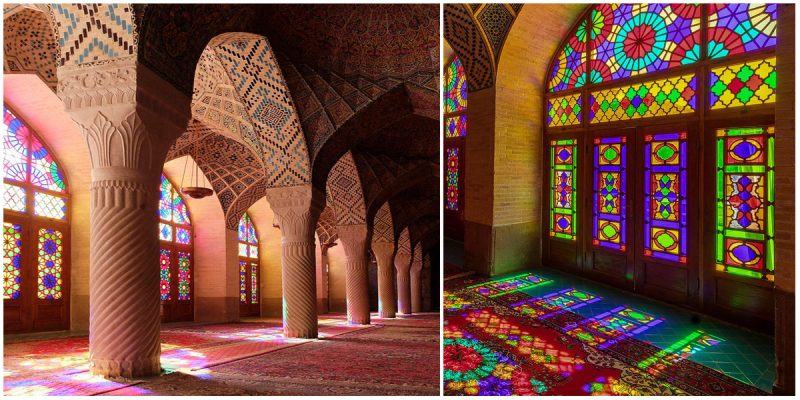The Nasir ol-Molk Mosque, also known as the Pink Mosque, is a traditional mosque in Shiraz, Iran.
It was built during the Qajar era by a Qajar ruler from 1876 to 1888 and it took 12 years to complete. Not very new and not very old, it is a celebration of both classic and modern times embedded in Islamic heritage.
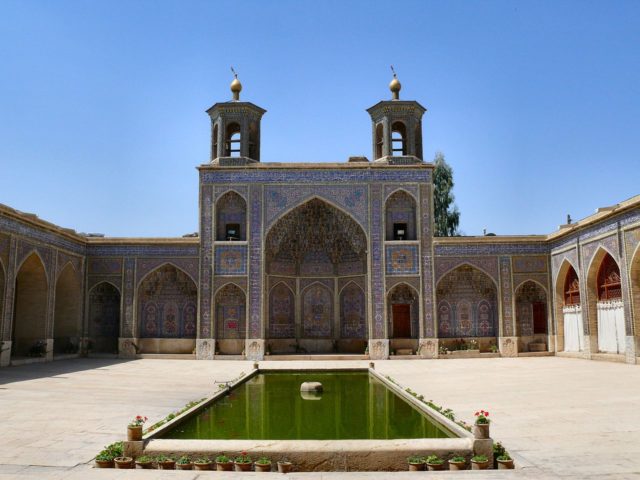
The designers were Mohammad Hasan-e-Memār, an Iranian architect, and Mohammad Rezā Kāshi-Sāz-e-Sirāzi.
The mosque is one of the most visually stunning buildings in the world.
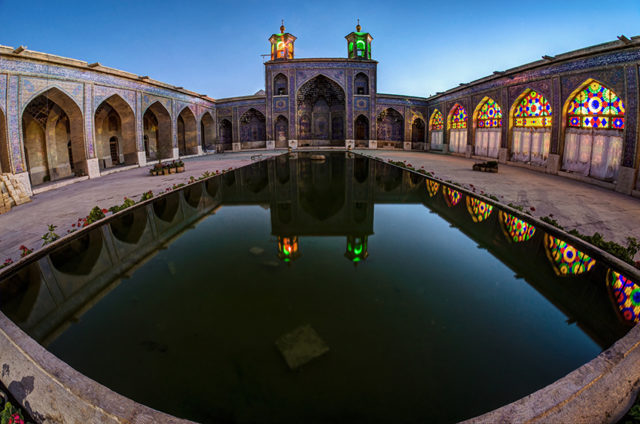
This is a space where light and worship intertwine.
The mosque includes extensive colored glass in its façade and displays other traditional elements such as the Panj Kāse design.
The mosque comes to life with the sunrise and colors dance throughout the day like whirling dervishes.
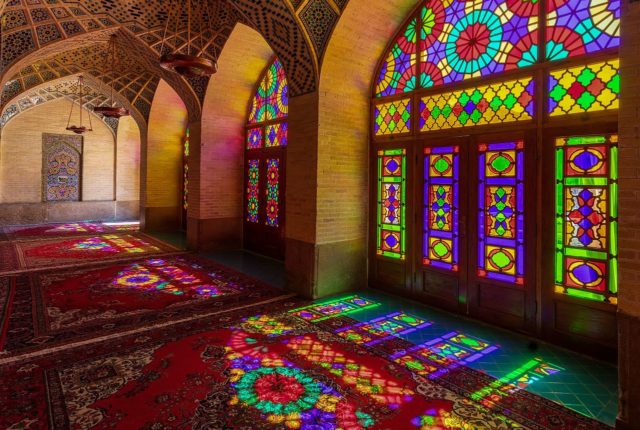
There are several pretty sights around the 130-year-old mosque: the twin minarets in the ablution pool, an illuminated ancient cow well on the southern side, and honeycomb vaults at both ends.
It has two eastern and western bedchambers, and the eastern one has a tiled altar accompanied with 12 columns and windows with colorful glasses.
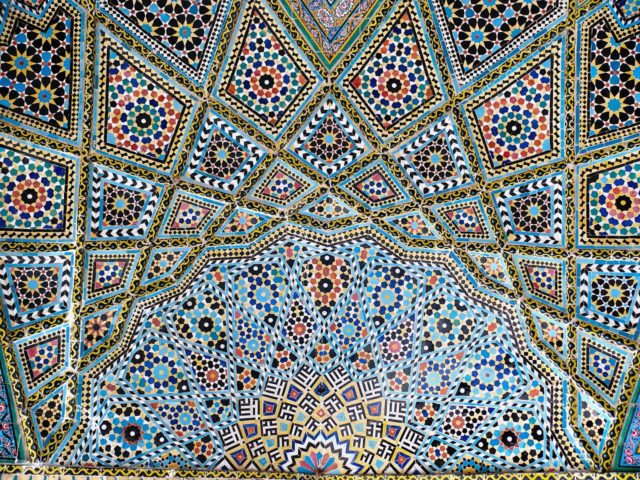
According to Muslim Heritage, the production of colored glass in west Asia existed around the eighth century, at which time the scholar nicknamed the father of chemistry Jābir ibn Hayyān wrote his book The Hidden Pearl. In it, he gave 46 recipes for producing colored glass and described the technique of cutting glass into artificial gemstones.
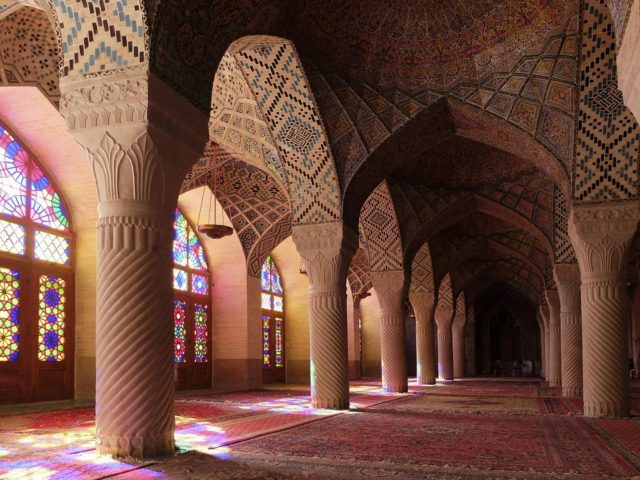
Another mosque like the Nasir ol Molk is the Shāh Chérāgh which is a funerary monument in Shiraz, housing the tomb of the brothers Ahmad and Muhammad, sons of Musa al-Kadhim.
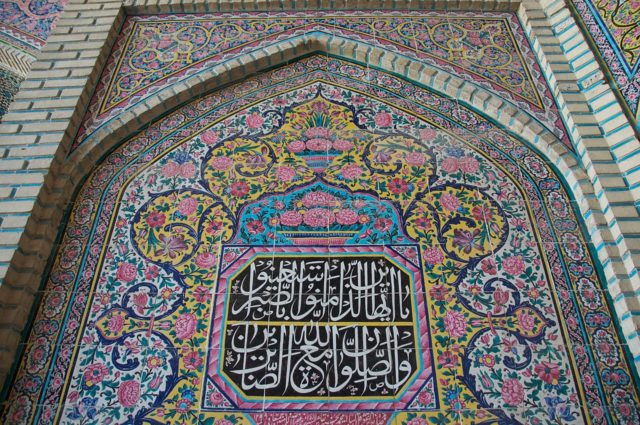
The Nasir ol-Molk is open whenever the elderly caretakers are on-site. Mornings are the best time to visit, when the mosque truly becomes a vivid and glorious kaleidoscope.
Restoration, protection, and maintenance of this monument were being continued by the Endowment Foundation of Nasir ol-Molk.
